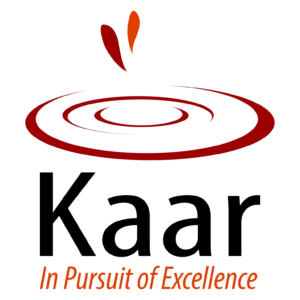For decades, energy-intensive commodities sectors such as paper and packaging have worked to improve process control, resulting in superior product quality while using less energy. This would allow them to save money while also maintaining a better atmosphere. Thus, to manage production and verify or anticipate product quality, a variety of concepts and instruments were developed. Though this strategy worked to some extent, it had its limitations.
By focusing on vision 2025, a significant portion of the value, reputation, and distinctiveness of the paper and packaging industries will be taken to a higher level. And the services provided by them will be built around by highly customizable items that are enhanced with digital information. Thus, as a result, larger lot sizes, process integration, and automation will all be required. But have you ever wondered how it can be accomplished with an Intelligent ERP system? If you’re curious to know about the answer, keep reading the blog until the end.
Strategic Priorities for Paper and Packaging Companies
The importance and values of Digital Transformation have been recognised by leading paper and packing companies. Thus, they are concentrating on five strategic priorities outlined below in order to transform their organization into an intelligent enterprise.
- Achieve Customer Centricity
- Connect and Automate Enterprises
- Run Smart Factories and Digital Networks
- Support Value-Added Services and New Business Models
- Build a Responsible and Sustainable Business
In order to achieve this, Intelligent technologies embedded in RISE with SAP framework acts as a key-value contributor to enabling paper and packing companies to become intelligent enterprises. Adapting to this enables your organization to redesign entire business models, processes, and products by driving enterprise digitalization through product development.
Support Value-Added Services and New Business Models
Paper and packaging companies have recently shifted their focus from just selling physical materials to providing complete solutions. This can involve collaborative development, product configuration advice, product usage advice and even more advanced scenarios. In order to achieve a competitive advantage, companies will use experience management to assess the ability of their investments, such as service or product recommendations.
To better understand this, let’s consider there are two businesses where:
- Company A uses a non-SAP ERP system
- Company B uses an SAP ERP system
As Company A’s entire business structure is governed by a non-ERP system, these were the pain points faced by them:
- Schedules and consequences of steel manufacturing vary.
- Customers receive no or a limited number of notifications for deviations.
- Individual players for each phase in the paper and packaging value chain.
- Product data is gathered in a detailed manner during the manufacturing process.
- Information is siloed in separate local production or quality systems.
Although detailed information exists at each stage of manufacturing, paper and packaging firms are unable to fully exploit it since it is disconnected. As a result, insufficient integration of their traditional system resulted in a high involvement of manual processes.
Now let’s see about Company B, which uses an SAP ERP system where:
- The specific needs of clients are analysed so that exact advice can be made.
- Creates the perfect product at the lowest possible cost and knows the details of each product unit.
- Advice to the consumer is provided on how to use each individual product unit (roll, batch).
- Customer performance rates are improved by gaining knowledge of the whole value chain.
- Proper planning, simulation, and forecasting of the most efficient schedule and operation are possible.
- All customers are provided with proper product information.
- Tracking and tracing movements all the way back to their roots were achievable.
Overall, Company B’s Intelligent ERP system [RISE with SAP Package] adds value to their interconnection. They generated new business, boost market share, deliver more product insights and build a more sustainable revenue stream as a result of this transition.
Top Value Drivers
The major value drivers in the paper and packaging companies post successful deployment of SAP S/4HANA are:
- Gaining a competitive advantage.
- The costs of operations are lower.
- Increase In revenue growth.
- An increase in the service profit margin by 3%–10%.
- The time it takes to process subscription invoices has improved by 25%–30%.
(Note: Data was taken from SAP’s statistics)
Now you may be asking, “How can RISE with SAP help us?”. Here are the primary business capabilities they offer to assist you in reaching your objectives:
- Use real-time data analysis to widen the breadth of client interactions and raise the amount of money that can be spent on them.
- Through collaborative networks, move from materials to intelligent solutions and new business models.
Conclusion
To conclude, using SAP software for paper and packing companies helps you gain competitive insights into your operations, increasing efficiency and agility while simplifying operations from procurement to manufacturing, order administration, distribution and transportation.
Own your tomorrow with a guided journey and outcome driven practices of RISE with SAP. To know more about the industry-specific solution, do get in touch with us!
